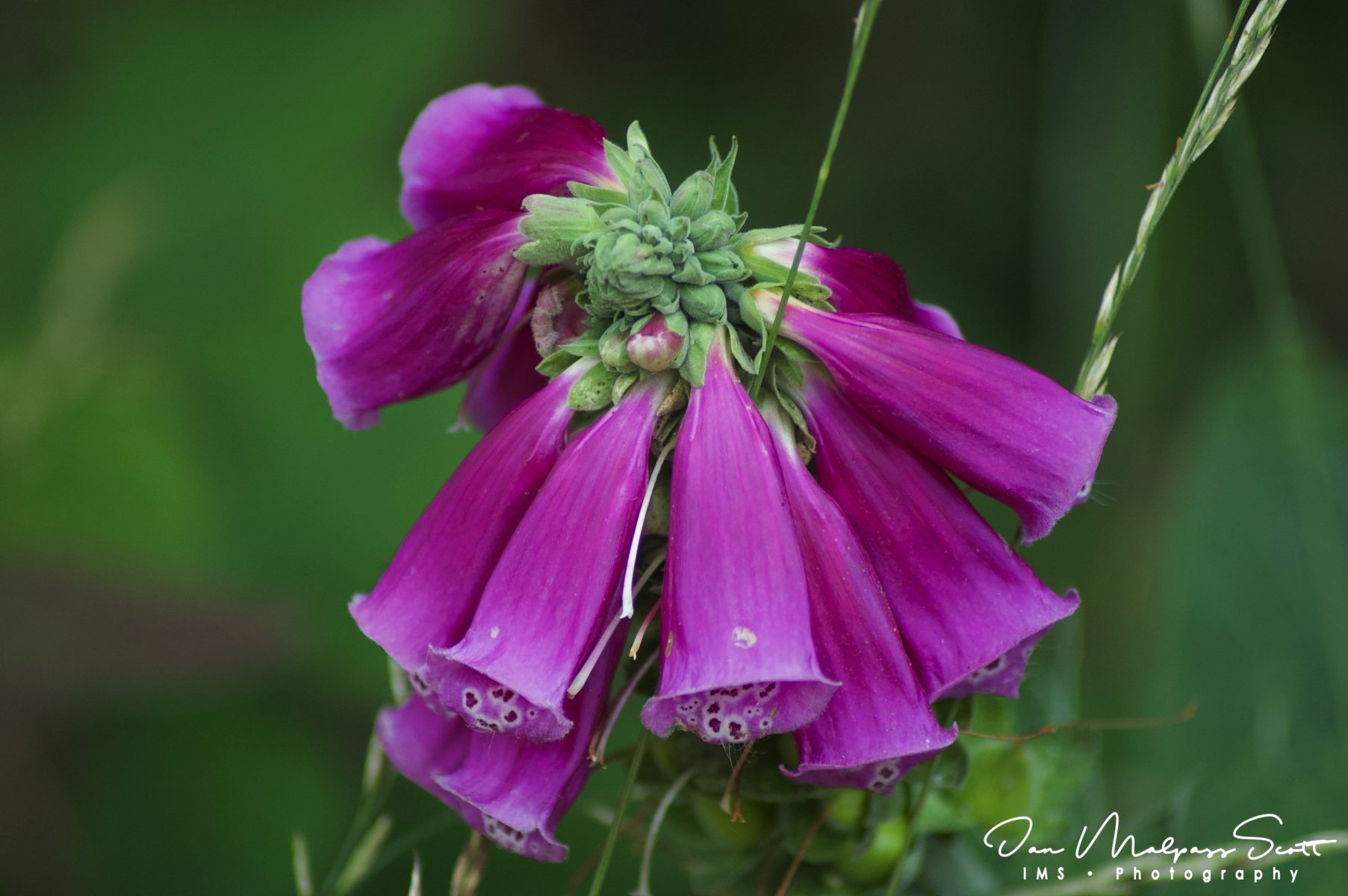![]()
Foxglove in Wylam, Northumberland
Digitalis (/ˌdɪdʒɪˈteɪlɪs/ or /ˌdɪdʒɪˈtælɪs/) is a genus of about 20 species of herbaceous perennials, shrubs, and biennials commonly called foxgloves.
This genus was traditionally placed in the figwort family Scrophulariaceae, but recent phylogenetic research has placed it in the much enlarged family Plantaginaceae. This genus is native to western and southwestern Europe, western and central Asia and northwestern Africa. The scientific name means “finger-like” and refers to the ease with which a flower of Digitalis purpurea can be fitted over a human fingertip. The flowers are produced on a tall spike, are tubular, and vary in colour with species, from purple to pink, white, and yellow. The best-known species is the common foxglove, Digitalis purpurea. This biennial plant is often grown as an ornamental plant due to its vivid flowers which range in colour from various purple tints through pink, light grey, and purely white. The flowers can also possess various marks and spottings. The first year of growth produces only the stem with its long, basal leaves. During the second year of the plant’s life, a long, leafy stem from 50 to 255 centimetres tall grows atop the roots of healthy plants.
Other garden-worthy species include D. ferruginea, D. grandiflora, D. lutea and D. parviflora.
Larvae of the foxglove pug, a moth, consume the flowers of the common foxglove for food. Other species of Lepidoptera eat the leaves, including the lesser yellow underwing.
The term digitalis is also used for drug preparations that contain cardiac glycosides, particularly one called digoxin, extracted from various plants of this genus.


